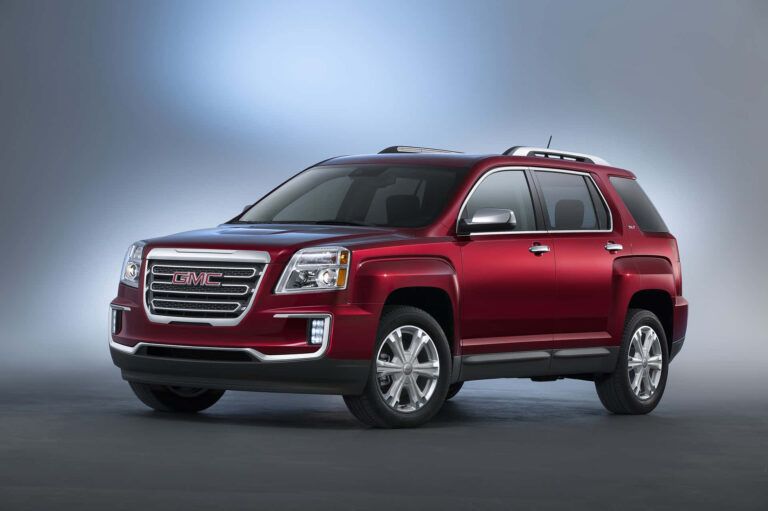How Much Do Mattracks Cost? A Comprehensive Guide to Investing in All-Terrain Mobility
How Much Do Mattracks Cost? A Comprehensive Guide to Investing in All-Terrain Mobility cars.truckstrend.com
In the realm of extreme off-road capability, few innovations command as much respect and fascination as Mattracks. These advanced rubber track conversion systems transform ordinary vehicles – from ATVs and UTVs to heavy-duty trucks and agricultural equipment – into unstoppable all-terrain machines. Whether navigating deep snow, soft sand, thick mud, or challenging rocky terrain, Mattracks offer unparalleled traction, flotation, and stability, opening up access to places previously unreachable.
However, this extraordinary capability comes with a price tag. The question, "How much do Mattracks cost?" is complex, with no single, simple answer. The investment varies significantly based on numerous factors, making a thorough understanding essential for any potential buyer. This comprehensive guide will delve into the intricacies of Mattracks pricing, helping you navigate the options and make an informed decision about enhancing your vehicle’s off-road prowess.
How Much Do Mattracks Cost? A Comprehensive Guide to Investing in All-Terrain Mobility
What Exactly Are Mattracks?
Before discussing costs, it’s crucial to understand what Mattracks are. They are not merely "tracks" but rather sophisticated, self-contained track conversion systems designed to replace a vehicle’s tires. Each Mattracks unit typically consists of a durable rubber track wrapped around a series of wheels and an integrated suspension system. They bolt directly onto the vehicle’s hub, distributing the vehicle’s weight over a much larger surface area than tires, significantly reducing ground pressure. This enhanced footprint provides superior flotation in soft conditions and incredible grip on slick or uneven surfaces, making them indispensable for diverse applications ranging from recreational adventuring and hunting to critical search and rescue operations, forestry, agriculture, and even military use.
Factors Influencing Mattracks Cost
The price of a Mattracks system is influenced by a multitude of variables. Understanding these factors is key to estimating your potential investment.
1. Vehicle Type and Weight
This is arguably the most significant determinant of cost. Mattracks are designed specifically for different vehicle classes and their corresponding weight and power outputs:
- ATV/UTV Mattracks: Designed for lighter, recreational vehicles, these are generally the most affordable options.
- Light Truck/SUV Mattracks: For consumer-grade trucks and SUVs, requiring more robust systems.
- Heavy Truck/Commercial Vehicle Mattracks: For larger, heavier-duty vehicles, demanding the most durable and expensive systems.
- Agricultural/Industrial Equipment Mattracks: Highly specialized and often custom-engineered for tractors, combines, and other heavy machinery, these can be the priciest.

2. Track Series and Model

Mattracks offers various series, each engineered for specific applications and vehicle sizes. Examples include:
- LiteFoot Series: Entry-level for smaller ATVs.
- 400 Series: Popular for larger ATVs and smaller UTVs.
- 6000 Series: Designed for UTVs and compact tractors.
- 88 Series: For full-size trucks and SUVs.
- 105 Series and above: For heavy-duty commercial, industrial, and military applications.
Naturally, as the series number increases, so does the complexity, durability, and cost of the system.

3. Track Material and Construction
While all Mattracks use durable rubber tracks, the internal components, frame materials, and suspension designs vary. Heavy-duty applications require stronger steel frames, larger bearings, and more robust suspension components, all of which contribute to a higher price. Specialized rubber compounds for extreme temperatures or terrains can also impact cost.
4. New vs. Used
Like any significant automotive accessory, purchasing used Mattracks can offer substantial savings. However, buying used comes with inherent risks, such as unknown wear and tear, lack of warranty, and potential for hidden damage. Thorough inspection and, ideally, purchasing from a reputable dealer or with a mechanic’s assessment are crucial for used systems.
5. Installation and Compatibility Kits
Mattracks are designed to be relatively straightforward to install, often bolting directly to the vehicle’s wheel hubs. However, each vehicle typically requires a specific "installation kit" or "fitment kit" which includes the necessary adapters, anti-rotation brackets, and sometimes gearing adjustments. These kits are an additional cost, usually ranging from a few hundred to over a thousand dollars, depending on the vehicle. Professional installation, while not always mandatory, is often recommended, especially for larger systems, adding to the overall expense.
6. Accessories and Upgrades
Mattracks can be customized with various accessories and upgrades, including:
- Anti-rotation kits: Essential for preventing the tracks from rotating around the axle, providing stability.
- Specialized treads: For specific terrain types (e.g., deeper lugs for snow, smoother for sensitive surfaces).
- Storage solutions: Carts or stands for when the tracks are not in use.
- Spare parts kits: For remote operations.
These add-ons can increase the total cost.
7. Dealer and Location
Prices can vary slightly between authorized Mattracks dealers due to shipping costs, regional market conditions, and individual dealer pricing policies.
Mattracks Price Ranges by Vehicle Type/Application
To provide a practical understanding, here are estimated price ranges for new Mattracks systems:
-
ATV/Smaller UTVs (e.g., LiteFoot, 400 Series):
- New Price: $3,500 – $8,000+
- Application: Recreational riding, hunting, light utility work in snow, mud, sand.
-
Larger UTVs/Compact Tractors (e.g., 6000 Series):
- New Price: $10,000 – $18,000+
- Application: More demanding recreational use, commercial landscaping, ranching, light construction.
-
Light Trucks/SUVs (e.g., 88 Series, 105 Series):
- New Price: $25,000 – $50,000+
- Application: Expedition vehicles, search and rescue, forestry, utility maintenance, overlanding.
-
Heavy-Duty Trucks/Commercial/Agricultural Equipment (e.g., 150 Series, 200 Series, 400 Series for heavy vehicles):
- New Price: $60,000 – $150,000+ (and sometimes even higher for custom, specialized systems)
- Application: Large-scale agriculture (tractors, combines), heavy construction, pipeline inspection, military, extreme industrial use.
Note: These are estimated ranges for the four-track system (a full set). Prices are subject to change and depend on the specific model, features, and market conditions. Installation kits are typically an additional cost.
Cost of Ownership: Beyond the Initial Purchase
The upfront cost is just one part of the equation. Owning Mattracks also entails ongoing expenses:
- Maintenance: Regular inspection, lubrication of bearings, checking track tension, and ensuring proper alignment are crucial for longevity. While not excessively high, these tasks require time and some basic tools.
- Wear and Tear Parts: Over time, components like the rubber tracks themselves, idler wheels, bogie wheels, and bearings will wear out and need replacement. The lifespan varies greatly with usage and terrain, but a full set of tracks can cost several thousand dollars to replace.
- Fuel Efficiency: Operating on tracks significantly increases rolling resistance compared to tires, leading to a noticeable reduction in fuel efficiency. Factor in higher fuel consumption for the duration of use.
- Storage: Mattracks are bulky. When not in use, they require substantial storage space, preferably indoors to protect them from the elements.
- Insurance: Check with your insurance provider; modifying your vehicle with tracks might require adjustments to your policy.
Tips for Purchasing Mattracks
Making a wise Mattracks investment requires careful consideration:
- Define Your Needs: Clearly identify your primary use case. Will you be in deep snow, thick mud, sand, or a mix? How often will you use them? This will help narrow down the appropriate series.
- Verify Vehicle Compatibility: Mattracks are vehicle-specific. Ensure the chosen system is compatible with your exact make, model, and year.
- New vs. Used Assessment: For recreational users on a budget, a well-maintained used set can be a great value. For critical commercial or professional applications, new might be the safer bet, offering warranty and peace of mind.
- Get Multiple Quotes: Contact several authorized Mattracks dealers to compare prices, availability, and installation costs.
- Factor in All Costs: Don’t forget installation kits, potential professional installation fees, and any desired accessories.
- Understand the Warranty: New Mattracks come with a manufacturer’s warranty. Understand its terms and what it covers.
- Consider Resale Value: Mattracks hold their value relatively well due to their specialized nature and durability, which can be a factor if you plan to upgrade in the future.
Challenges and Solutions
- High Initial Cost:
- Solution: Justify the investment by considering the expanded capabilities and access it provides. Explore financing options through dealers or financial institutions. Look into the used market for cost savings, but proceed with caution.
- Reduced Road Speed:
- Solution: Mattracks are designed for off-road use and significantly reduce top speed. They are generally not street legal for extended highway travel. Plan your routes accordingly and consider trailering your vehicle to the point of off-road access.
- Increased Fuel Consumption:
- Solution: Account for higher operating costs in your budget. Optimize driving habits to conserve fuel.
- Maintenance Demands:
- Solution: Incorporate regular maintenance into your routine. Learn basic upkeep or budget for professional servicing to extend the lifespan of your tracks.
Mattracks Price Table (Estimated Ranges)
| Mattracks Series/Type | Compatible Vehicle Type | Estimated New Price Range (USD) | Estimated Used Price Range (USD) | Key Features / Application |
|---|---|---|---|---|
| LiteFoot | Small ATVs (e.g., up to 500cc) | $3,500 – $5,500 | $1,500 – $3,000 | Entry-level, light-duty, recreational snow/mud. |
| 400 Series | ATVs, Smaller UTVs (up to 1200cc) | $5,000 – $8,000 | $2,500 – $4,500 | Versatile for recreational, hunting, light utility. |
| 6000 Series | UTVs, Compact Tractors | $10,000 – $18,000 | $5,000 – $9,000 | Robust for heavier UTVs, commercial landscaping, ranching. |
| 88 Series | Light Trucks, SUVs | $25,000 – $35,000 | $12,000 – $20,000 | Designed for consumer pickups/SUVs, expedition, SAR. |
| 105 Series | Full-Size Trucks, Heavy SUVs | $35,000 – $50,000 | $18,000 – $30,000 | More robust for heavier trucks, challenging industrial/commercial. |
| 150/200 Series | Commercial Trucks, Tractors | $60,000 – $90,000 | $30,000 – $50,000 | Heavy-duty, industrial, agriculture, large construction. |
| 400 Series (Heavy) | Very Heavy Trucks, Combines, Industrial | $90,000 – $150,000+ | $45,000 – $80,000+ | Extreme duty, highest load capacity, specialized industrial. |
Note: Prices are estimates and do not include shipping, installation kits, or professional installation fees, which are additional. Used prices depend heavily on condition, age, and availability.
Frequently Asked Questions (FAQ)
Q: Can I drive Mattracks on pavement or asphalt?
A: While possible for short distances, it’s generally not recommended. Driving Mattracks on hard, abrasive surfaces like pavement will significantly accelerate wear on the rubber tracks and internal components. They are designed for off-road, soft terrain use.
Q: How fast can I go with Mattracks?
A: Mattracks significantly reduce a vehicle’s top speed. Typical speeds range from 20-40 mph, depending on the vehicle and track model. They are optimized for traction and flotation, not speed. Always consult the manufacturer’s recommendations for safe operating speeds.
Q: Are Mattracks hard to install?
A: Mattracks are designed for relatively straightforward installation, often bolting directly to the vehicle’s hub in place of the wheels. However, it requires proper lifting equipment and some mechanical aptitude. Professional installation is recommended, especially for larger systems, to ensure correct fitment and alignment.
Q: Do Mattracks affect my vehicle’s warranty?
A: Modifying your vehicle with aftermarket accessories like Mattracks can potentially impact your vehicle’s factory warranty, particularly for drivetrain components. It’s advisable to check with your vehicle manufacturer or dealership beforehand.
Q: What is the lifespan of Mattracks?
A: The lifespan varies greatly depending on usage, terrain, maintenance, and the specific track model. With proper care and operation, the rubber tracks can last thousands of miles, while internal components like bearings may need replacement sooner. Aggressive driving or use on abrasive surfaces will reduce lifespan.
Q: Are Mattracks street legal?
A: Generally, no. Mattracks are not designed for on-road use and typically do not meet highway safety standards. Their width can exceed legal limits, and their low speed capability makes them unsafe for road traffic. They are best transported to your off-road destination via trailer.
Conclusion
The cost of Mattracks is a substantial investment, reflecting the advanced engineering and unparalleled capabilities they offer. From a few thousand dollars for recreational ATV systems to well over a hundred thousand for heavy-duty industrial applications, the price tag directly correlates with the size, strength, and sophistication required for the task at hand.
While the initial outlay and ongoing maintenance demand careful consideration, the value proposition of Mattracks lies in the access and mobility they unlock. For professionals needing to reach remote locations, adventurers seeking ultimate off-road freedom, or farmers optimizing for challenging field conditions, Mattracks transform limitations into possibilities. By thoroughly researching your specific needs, understanding the various cost factors, and planning for both purchase and ownership expenses, you can make a well-informed decision that truly elevates your vehicle’s performance to an all-terrain powerhouse.






